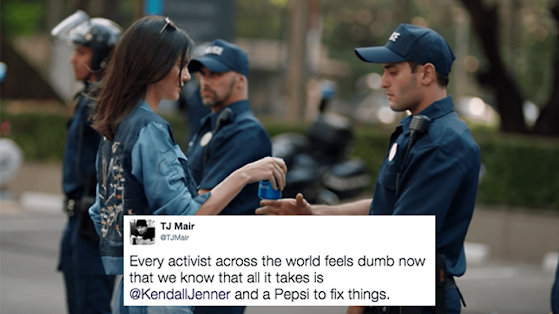Developing visual campaigns is an essential aspect of modern marketing. With the ever-increasing demand for engaging and attention-grabbing content, visual campaigns have become a critical tool for businesses and brands looking to effectively promote their products or services. This blog will explore the key elements of developing visual campaigns and their importance in modern marketing.
Visual campaigns refer to the use of visual content, such as images, videos, infographics, and animations, to promote a product, service, or message. The primary objective of visual campaigns is to engage the target audience and convey the message effectively. To develop an effective visual campaign, several elements need to be considered. Otherwise, even the best product in the world can be ruined because of poor visual marketing campaigns.
One example of a product that was negatively impacted by a poorly executed campaign is Pepsi's "Kendall Jenner" commercial in 2017. The ad was intended to promote unity and social justice, but instead it was met with widespread criticism and backlash for being tone-deaf and insensitive to the Black Lives Matter movement and other social justice causes.
The ad featured Kendall Jenner, a celebrity and model, joining a protest and handing a can of Pepsi to a police officer, seemingly resolving the tension between the protesters and the police. The ad was widely criticized for trivializing and co-opting serious social justice issues, and for using a privileged white celebrity to promote a product.
The backlash was swift and widespread, with many consumers and social justice advocates calling for a boycott of Pepsi. The company quickly pulled the ad and issued an apology, but the damage to the brand had already been done. The campaign was widely seen as a failure and a missed opportunity for the brand to authentically connect with its target audience.
Dozé, M. (2018). Kendall Jenner and Pepsi. Young Scholars in Writing, 15, 116-122.

This article is interesting because it clearly relates to the subject topic of developing visual campaigns. It was a good read, as it defined visual campaigns before anything else. Further, upon stating their opinion, the authors backed it up with an example, which is Pepsi’s commercial. The tone of the article was neither positive nor negative. It was neutral and absorbing because there is no bias between Pepsi’s commercial and “Black Lives Matter” supporters. Ultimately, they formulated an eye-catching title, relaying relevant information that gave advice on the importance of creating the best commercial rather than the product itself. It was clear that Pepsi was entirely rejected; still, it would be great to know if negative publicity like this would have a possibility of producing a positive effect on company sales. Other than that, the authors wonderfully justified that even the best product in the world can be ruined by a bad campaign.
ReplyDeleteFeedback from Group 3A
Thiago Goncalves (2111606)
Laura Palacios (2100980)
Donna Piandong (2112886)
Kushal Thapa (2109214)